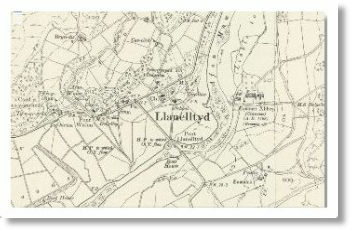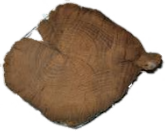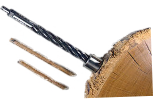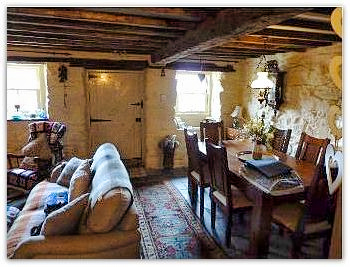We raise money from public and private sources to fund targeted tree-ring dating programmes.
This highly technical work is carried out by professional laboratories and entails drilling in-situ oak timber and removing small cores to compare with standard control chronologies – sounds simple but it’s a challenging science! Buildings were normally erected within a year or two of felling.
Unfortunately, not all oak is suitable for this procedure because many houses were built using ‘fast grown’ timber with insufficient tree rings. But scientific dating technologies are developing all the time and we will take advantage of breakthroughs as they come on stream. To date we have tree-ring dated over 100 houses.
Click here for more details on tree-ring dating.
We encourage and help members research and write up the histories of houses that were built before the mid-1700s. This end date is intentionally inexact because we want to capture houses that pre-date the widespread use of mass-produced materials and where there was still distinctive local variation in plan, form and decoration.
Initially, this involves researching the Internet, moving on to local libraries, county archives and national libraries. There is no cut-off date for the house histories, many of which take the story down to the present day.
All our house histories can be found in our Reports
Houses that are the subject of our series of house histories have been selected by our volunteers for a variety of reasons – sometimes focusing on a particular area or estate, or because they appear in historical sources like rentals or surveys, or because people are interested in their own houses or those of their friends, or simply because the houses look interesting.
Although over 1,000 houses have been visited, many have been missed. By adopting a parish-by-parish approach, using local knowledge, internet searches and research in local Archives, we hope to identify all the houses built before about 1750 (including ruins) that still survive in North Wales.
Over the long term, we hope to deepen our knowledge of these buildings by carrying out more house histories, surveys and, on a more selective basis, commission tree-ring dating to provide firm dates where there is insufficient documentation.

We commission architectural surveys of houses of exceptional interest. This involves making detailed
measured plans, sections and a full photographic record. Normally these are undertaken by professional investigators but we provide some training in the basics of making an historic building recording and intend to develop this in the years ahead. To date we have recorded over 70 houses.
Plans drawn up by Peter Thompson





Tree-ring Dating (Dendrochronology)









